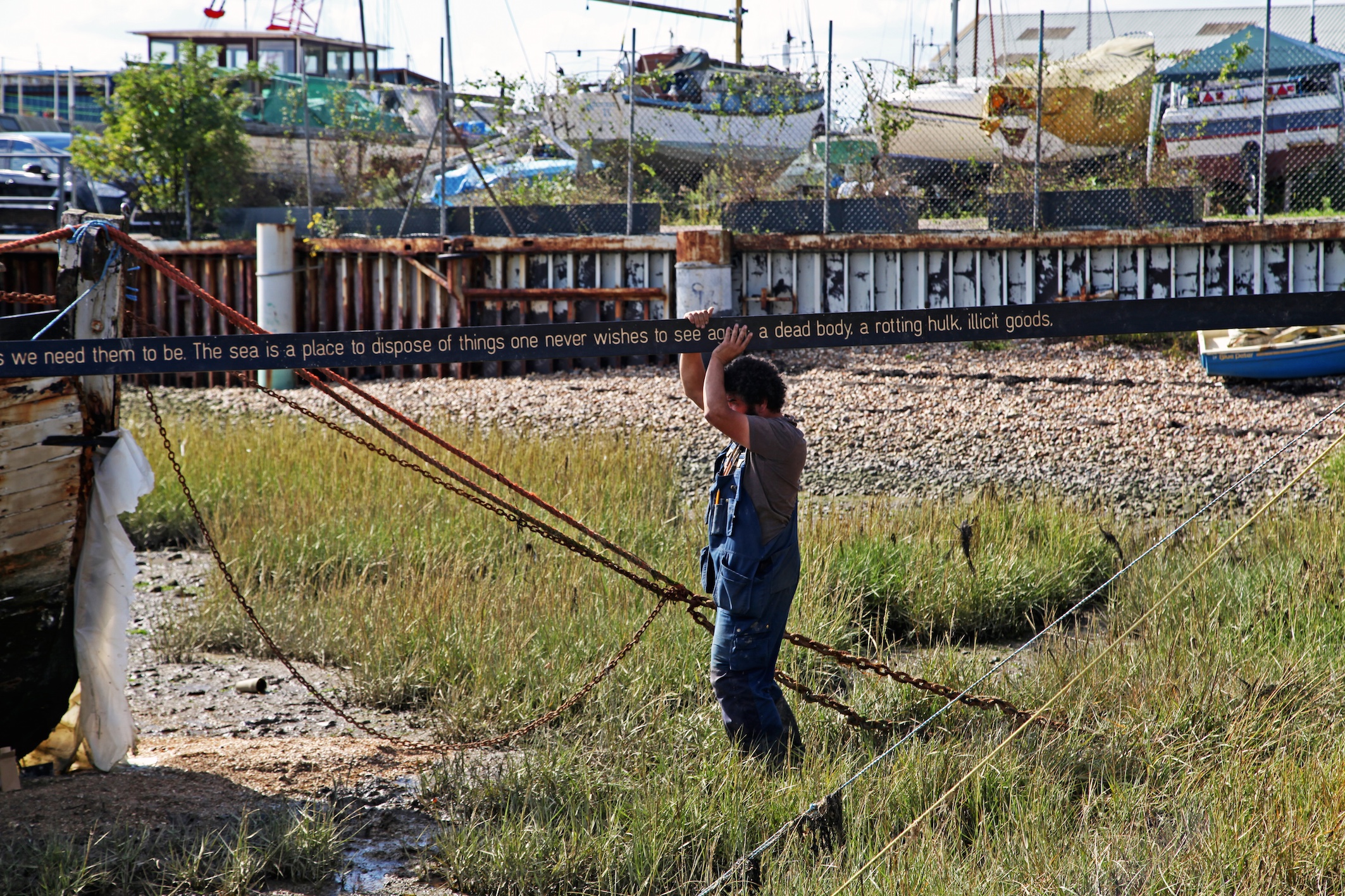'Wrecked on The Intertidal Zone' was an art and citizen science collective inquiry that has uncovered and highlighted local knowledge about the changing ecology, society and industry of the Thames estuary. The project was conceived by artists YoHa, Critical Art Ensemble, Andy Freeman, Fran Gallardo, and arts organisation Arts Catalyst, and developed in partnership with local people in Southend and Leigh-on-Sea.
Over the period of a year from 2015 to 2016, I followed the project closely to produce a series of films, documenting public events and artist responses that led to the eventual resinking of ‘The Souvenir’: A forty foot, twelve ton Thames bawley fishing vessel rescued from the estuary mud. Reconfigured as a public monument inscribed with local knowledge and lost species, the ship can now be visited at low tide off of a public footpath by Two Tree Island. Further context on the project can be found here.
Epitaphs of the Common Mud, digital video, 2016. Filmed and edited by James Ravinet.
“Here are the names of the disappeared that haunt the Thames Estuary. The pitch pine planking of the Souvenir is inhabited, scarred, cut, and incised with that which has been lost at sea, displaced, dispossessed, evicted, or pushed to extinction.” A short film of the project Graveyard of Lost Species, the Souvenir boat being installed with ‘lost species’ and sailed back out into the estuary.
Graveyard of Lost Species is a temporary monument by artists YoHa and Critical Art Ensemble, commissioned by Arts Catalyst. The collaborative project celebrates the local tradition of wrecking boats on the salt marsh which in turn act as a concrete but decaying memory of what has passed. Graveyard of Lost Species records and acknowledges wildlife, marine creatures, people, livelihoods, fishing methods, landmarks, mythologies, and local dialects that once flourished in the Thames Estuary and are now absent.’ Critical Art Ensemble.

Image: Stuart McHardy installs laser-cut inscriptions on the ship at a temporary mooring on Belton Way.
Fun Mud Day, 2015. Filmed and edited by James Ravinet.
Over the summer of 2015, the wreck of the Souvenir was cleaned and re-configured, whilst sited in a prominent public setting by the Belton Way Small Craft Club in Old Leigh. The wreck served as a centre point for a set of enquiries with people in the area, to gather local knowledge of and expertise about 'lost species' of wildlife, marine creatures, livelihoods, fishing methods, landmarks and local dialects that once flourished in the Estuary.

Installation view: Notes from the Field: Commoning Practices in Art and Science, Arts Catalyst.
In conversation: Graham Harwood, Rachel Lichtenstein and Critical Art Ensemble, 2015. Filmed and edited by James Ravinet. Sound recorded by Stuart Bowditch.
“How do you make a monument that, rather than creating a smooth ideological space in which all people are expected to feel and believe in the same way, instead accounts for difference and allows for the contradictions and conflict of history, that lets all the different voices speak out? It might be a community but there is not unity of story – there are vastly indifferent interpretations of what’s going on. We are creating an anti-monument that will come apart, like the memories, over time.” Steve Kurtz, Critical Art Ensemble.

Image: Preparing to float and resink ‘The Souvenir’ off of Two Tree Island.
‘Talking Dirty: Tongue First’, Leigh-on-Sea Maritime Festival, August 2015. Filmed and edited by James Ravinet.
Artist Fran Gallardo presented his Tongue First menu to the people of Essex at the annual Leigh-on-Sea Maritime Festival. People tried grey mullet with hair soy sauce, edge cordial, mud cola and many salty greens of the Thames Estuary.

Image: Stuart McHardy preparing the hull of the ship for the installation of laser-cut inscriptions.

Image: Fun Mud Day gathering at Belton Way.